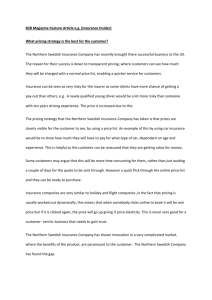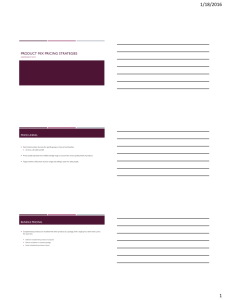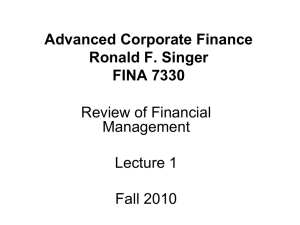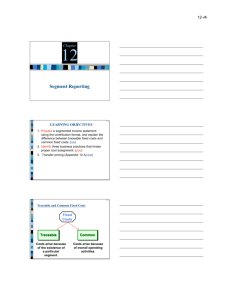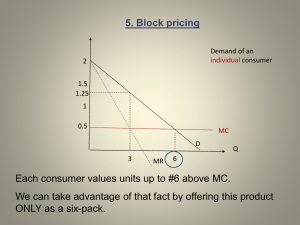Finance Theory I
advertisement
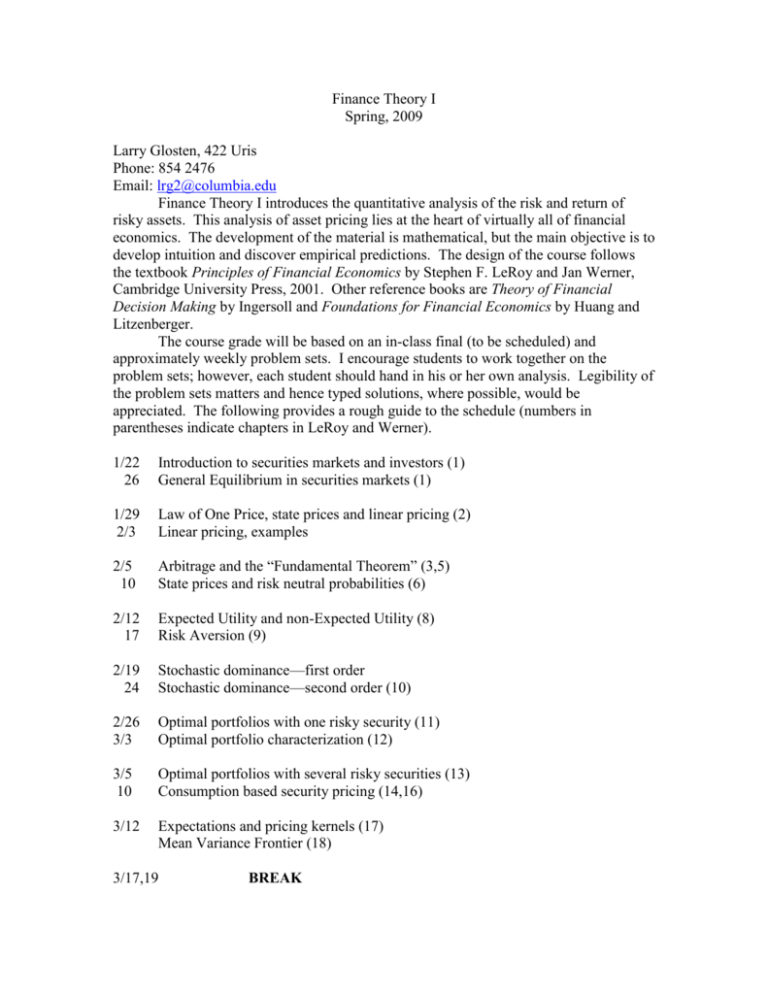
Finance Theory I Spring, 2009 Larry Glosten, 422 Uris Phone: 854 2476 Email: lrg2@columbia.edu Finance Theory I introduces the quantitative analysis of the risk and return of risky assets. This analysis of asset pricing lies at the heart of virtually all of financial economics. The development of the material is mathematical, but the main objective is to develop intuition and discover empirical predictions. The design of the course follows the textbook Principles of Financial Economics by Stephen F. LeRoy and Jan Werner, Cambridge University Press, 2001. Other reference books are Theory of Financial Decision Making by Ingersoll and Foundations for Financial Economics by Huang and Litzenberger. The course grade will be based on an in-class final (to be scheduled) and approximately weekly problem sets. I encourage students to work together on the problem sets; however, each student should hand in his or her own analysis. Legibility of the problem sets matters and hence typed solutions, where possible, would be appreciated. The following provides a rough guide to the schedule (numbers in parentheses indicate chapters in LeRoy and Werner). 1/22 26 Introduction to securities markets and investors (1) General Equilibrium in securities markets (1) 1/29 2/3 Law of One Price, state prices and linear pricing (2) Linear pricing, examples 2/5 10 Arbitrage and the “Fundamental Theorem” (3,5) State prices and risk neutral probabilities (6) 2/12 17 Expected Utility and non-Expected Utility (8) Risk Aversion (9) 2/19 24 Stochastic dominance—first order Stochastic dominance—second order (10) 2/26 3/3 Optimal portfolios with one risky security (11) Optimal portfolio characterization (12) 3/5 10 Optimal portfolios with several risky securities (13) Consumption based security pricing (14,16) 3/12 Expectations and pricing kernels (17) Mean Variance Frontier (18) 3/17,19 BREAK 3/26 31 CAPM (19) The CAPM and classical mean variance analysis 4/2 7 APT (20) Dynamic models—information and equilibrium (21) 4/9 14 Dynamic completeness and equilibrium (23) Risk neutral probabilities and the pricing kernel, dynamically (25) 4/16 21 The martingale property (26) Summary and concluding remarks
